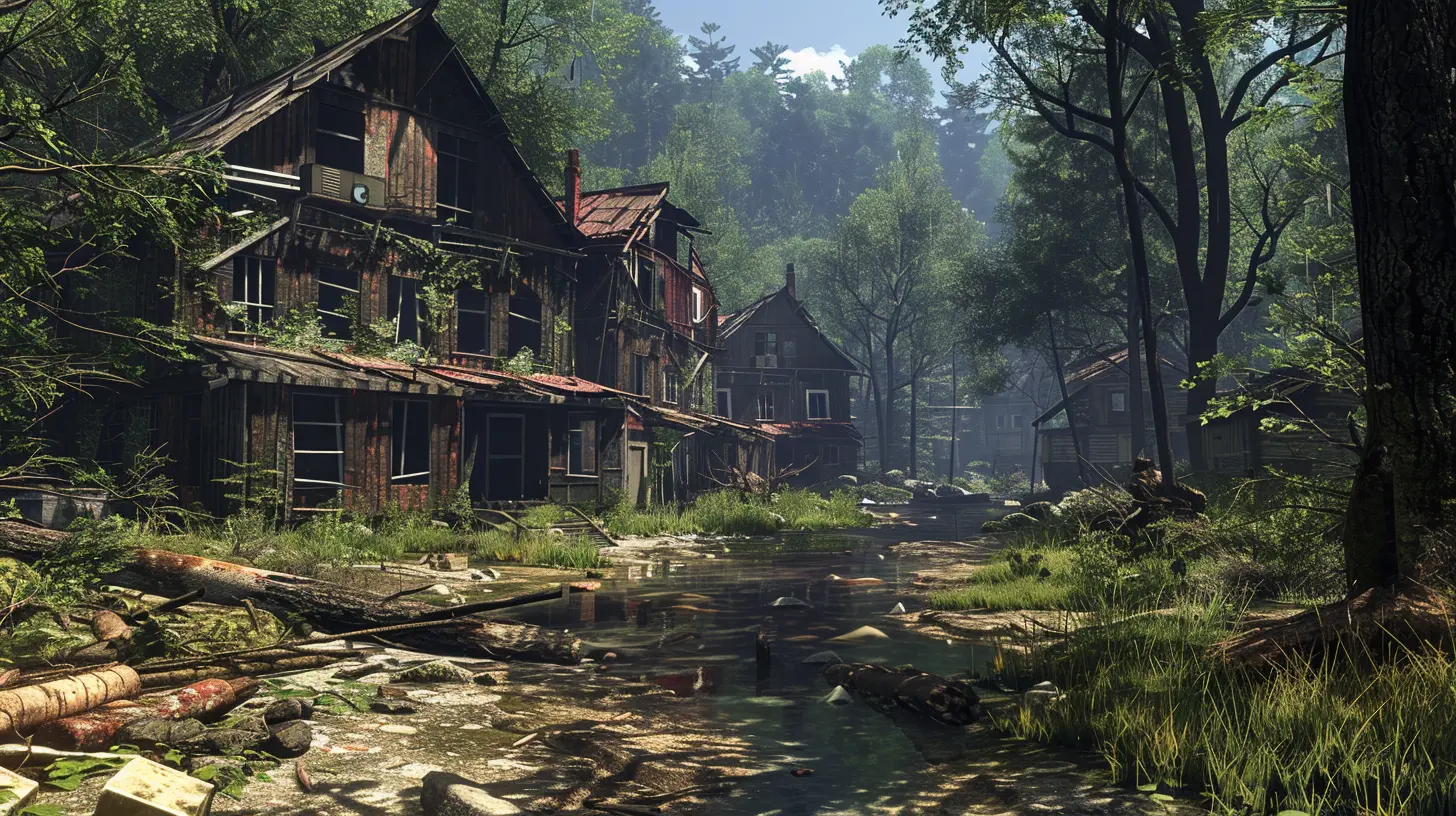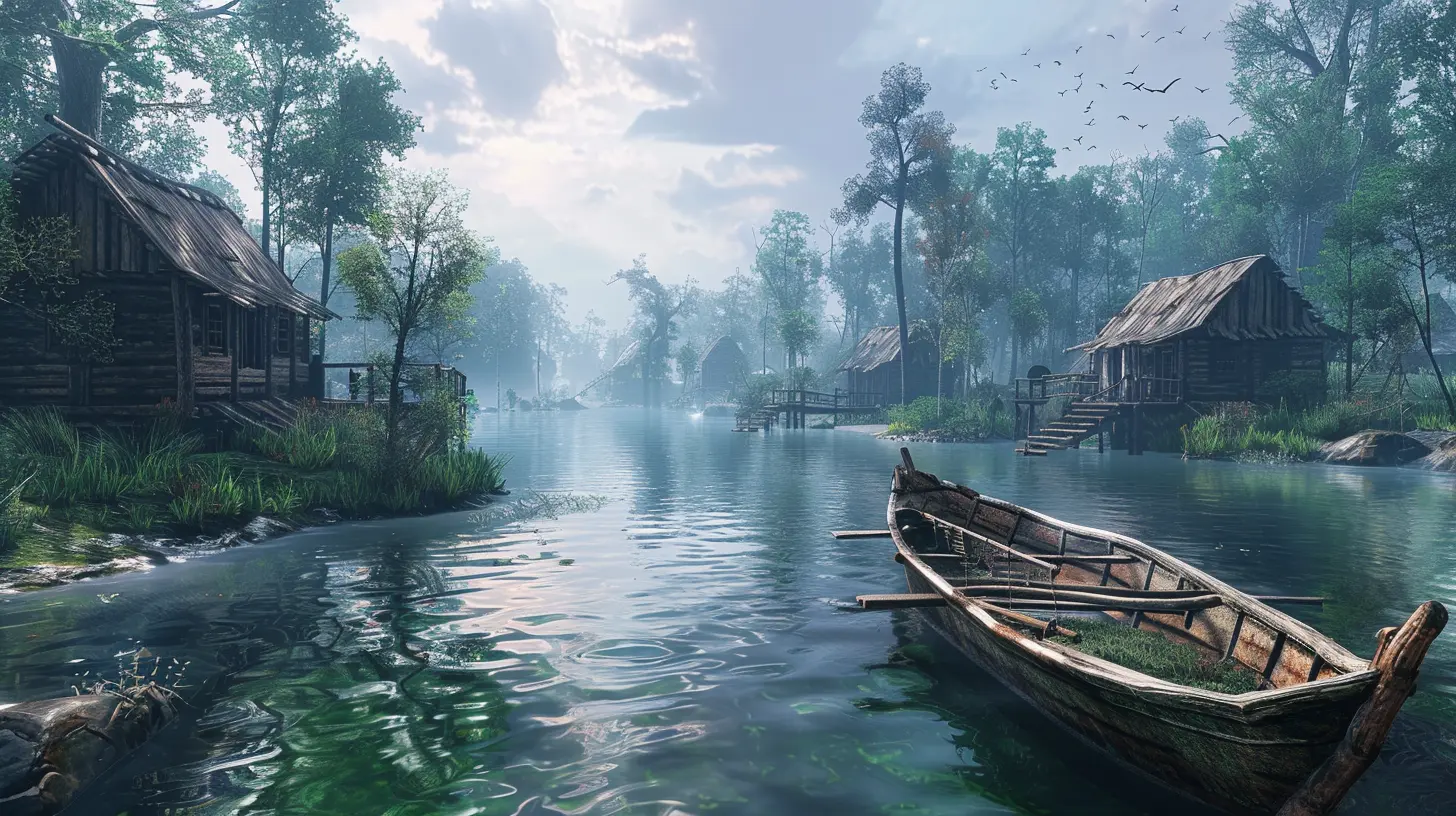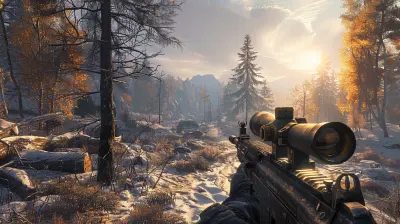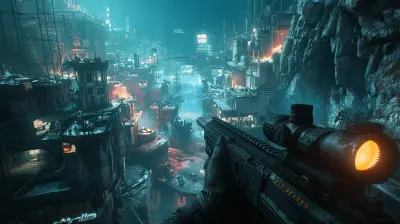Survival Games With the Most Immersive Environments
20 September 2025
If you're anything like me, you probably love getting lost in the worlds of survival games. There’s just something about starting from scratch, braving hostile conditions, and slowly building your way to safety. But let’s be real—what truly makes a survival game unforgettable isn’t just the gameplay mechanics. It’s the environment. When a survival game nails immersion, you're not just playing; you're living, breathing, and fighting for survival in its world.
In this article, we’re going to take a look at some of the most immersive environments survival games have to offer. So, gear up—grab your virtual hatchet, flashlight, or whatever tools you need, and let’s dive headfirst into these jaw-droppingly detailed worlds! 
What Makes a Game’s Environment Truly Immersive?
Before we dive into the list, let’s pause for a second. What exactly makes survival game environments so immersive? It’s not just pretty graphics, right? It’s about how the world feels alive and interactive. Think realistic weather systems, dense atmospheres, the rustle of leaves, or even the small details like the sound of your footsteps crunching on snow.Immersion also comes from how the world reacts to you. Does it feel personal? Dynamic? When the sun sets and the sky darkens, do you feel your pulse quicken as danger sets in? The best survival games make you forget you're holding a controller or tapping a keyboard. Instead, you're there, in the thick of it.
Now that we’ve got that squared away, let’s talk about the games that do it best.
1. The Forest
Ever wondered how well you’d survive in a cannibal-infested forest? Yeah, me neither (until I played The Forest). This game plops you into a lush, sprawling forest after surviving a plane crash. But trust me, this "vacation spot” isn’t exactly tourist-friendly.The environment is breathtaking—thick trees form claustrophobic canopies, sunlight filters through leaves, and shadows stretch as the day progresses. When night falls? Oh boy, it's a different beast altogether. The darkness in The Forest feels overwhelming. No friendly light pollution here; every torch and campfire you build feels like a fragile barrier between you and the nightmares lurking out there.
The game lives and breathes around you. Wildlife moves naturally, and the sound design is unnervingly good. Hear that distant snap of a twig? Yep, you’re not alone. 
2. Subnautica
Afraid of the ocean? Subnautica will either cure you or solidify your fear forever. This underwater survival game throws you headfirst into an alien ocean world after your spaceship crash-lands. If you’ve ever wondered what it feels like to explore the deep blue, Subnautica is as close as it gets without strapping on an actual scuba tank.The environment is absolutely stunning—from shallow coral reefs teeming with life to pitch-black abysses where monstrous leviathans lurk. But it’s not just about how it looks. The way the ocean world feels alive is where Subnautica truly shines. Schools of alien fish scatter as you approach, bioluminescent plants light up the seabed, and the pressure of diving deeper feels tangible.
Exploration isn’t just encouraged—it’s necessary. And the deeper you go, the more dangerous and awe-inspiring it becomes. Let’s just say, I’ve had more than one moment of panicked swimming when the shadow of something huge passed overhead. 
3. Green Hell
If you've ever thought the Amazon rainforest would make a great gaming backdrop, Green Hell takes that idea and cranks it up to 11. This isn't your typical walk in the woods—this dense jungle wants you dead, and it has plenty of ways to make sure that happens.The environment is rich and oppressive, with every sound making you question whether it’s just the wind or something stalking you. The visuals are downright stunning. Thick foliage blocks out the sun, rivers cut through the greenery, and the jungle feels alive with the constant chirping of birds, buzzing insects, and other ambient noises.
But it’s the little details that make it truly immersive. Got a small wound in-game? Check your arm. Yep, you might have maggots crawling in it. Thirsty? Better figure out if that water is safe to drink or risk ingesting parasites. Green Hell doesn’t just drop you into its world—it forces you to survive it in the most brutal, realistic way possible.
4. Red Dead Redemption 2 (Survival Mode)
Okay, hear me out on this one. While Red Dead Redemption 2 isn’t strictly a survival game, its optional survival-inspired mechanics deserve a mention. The game’s depiction of the American frontier is arguably one of the most immersive environments in gaming history.Playing in a survivalist style—hunting, crafting makeshift camps, and living off the land—can turn this wild west masterpiece into one heck of a survival experience. The snowy peaks of Ambarino make you shiver, while the swamps of Lemoyne feel sticky and suffocating.
The attention to detail is insane. Wildlife interacts with you in believable ways, and weather conditions can impact how you play. Ever tried trudging through knee-deep snow with a bounty on your head? It’s not fun—but it’s incredibly immersive.
5. Conan Exiles
If survival games had a phrasebook, Conan Exiles would probably have “brutal” stamped on every single page. Set in a sprawling desert wasteland inspired by the world of Conan the Barbarian, this game is as harsh and unforgiving as the environment itself.Immersion here comes from the scale of the world. Massive dunes stretch into endless horizons, ancient ruins whisper of a long-lost civilization, and dangerous wildlife reminds you that you’re not at the top of the food chain. Oh, and don’t forget the weather—sandstorms can roll in at any moment and wipe you out if you’re not properly prepared.
Building your base feels satisfying because the hostile environment constantly pushes you to improve it. Plus, the ability to explore massive dungeons and lush oases adds variety to the otherwise barren wasteland.
6. The Long Dark
Winter survival games are rare, but The Long Dark is the reigning king of this icy subgenre. Set in the frozen wilderness of Canada, this game doesn’t pull any punches. From the moment you step into its snow-covered world, you’re fighting against Mother Nature herself.What makes the environment so immersive? For starters, the art style is beautifully unique, blending realism with a painterly aesthetic. You’ll find yourself mesmerized by the aurora-lit night skies, but don’t get too distracted. The cold is relentless, and you’ll need to scavenge for every scrap of food, matches, and firewood you can find.
Every crackling fire you build feels like a lifeline, and every snowstorm makes you genuinely feel like you might not make it. It’s a game that doesn’t just simulate survival—it is survival.
7. ARK: Survival Evolved
What happens when you combine survival mechanics with dinosaurs? You get ARK: Survival Evolved. This game offers one of the most unique and immersive environments because it’s not just about surviving—it’s about thriving alongside prehistoric creatures.From tropical jungles to icy mountain peaks, ARK throws every type of biome your way. But the most immersive aspect of the game is its ecosystem. Predators hunt prey, creatures migrate, and the world feels like it exists independently of you.
Add in the ability to tame dinosaurs, and you’ve got a survival game where the environment isn’t just a backdrop—it’s an active part of your journey. Flying over the landscape on the back of a pterodactyl? Yeah, that’ll make you forget it’s just a game.
Why These Games Stand Out
Each of these games stands out because they don’t just offer survival—they offer immersion. They make you forget your real-world worries and throw you into environments that feel alive, dangerous, and absolutely captivating. Whether you’re dodging cannibals, braving the cold, or swimming alongside alien sea creatures, these games know how to pull you in and refuse to let go.The truth is, survival games with immersive environments aren’t just about staying alive. They’re about experiencing worlds so grounded in detail and realism that they make you sit back and say, “Wow, I’m really here.
all images in this post were generated using AI tools
Category:
Survival GamesAuthor:

Kaitlyn Pace
Discussion
rate this article
1 comments
Jackson Pace
In the wild world of survival games, immersion is the ultimate weapon. From lush forests to desolate wastelands, these environments don't just set the stage—they become characters themselves, challenging players to adapt, explore, and truly survive. Nature’s beauty can be brutal!
October 1, 2025 at 3:30 PM

Kaitlyn Pace
Absolutely! Immersive environments elevate survival games, transforming nature into an integral player that tests our adaptability and instincts. It's a beautiful yet unforgiving experience!


